We never have trip plan to visit Dresden but with the suggestion of my better half that we should make a stop at Dresden when we are half way to Berlin (Note: I have to agree with her excellent idea of course). We well equipped on this trip because the car has a GPS Navigation system.
Dresden – Germany lies on the banks of the River Elbe is also called ‘Florence on the Elbe’ and in former East Germany. We saw old photo of Dresden’s buildings were destroyed during World War II. The town of Dresden goes back to the Slavic settlement Drezdany and was first mentioned in a document in 1206. It became the residence of the Albertiner dukes and kings in the 15th century and the capital of Saxony in 1547. Under the reign of King August the Strong (1670 to 1733), Dresden developed to a European metropolis.
The weather was little wet but we well equipped. We found parking space near the moat and felt lost but we saw the clue and start following large group of tourist. Crossing the moat to very large court yard, it’s like a palace but not sure. (Note: found out later that is Zwinger Palace). The main entrance of the Zwinger complex is the Crown Gate at the Ostra-Allee, (Note: where we came thru by crossing the moat) but you can also enter via the Theaterplatz through a passage in the Picture Gallery (Note: the way we departed the palace courtyard).
Zwinger Palace
The name 'zwinger' means 'interspace' and originates from its location between former city fortifications. The Zwinger, with its large inner courtyard, was used for court festivities, tournaments and fireworks. The Zwinger Palace is Dresden's most famous landmark.
Rampart and Glockenspiel Pavilion.
The sculptured Rampart Pavilion is topped by a statue of Hercules. The almost symmetric Glockenspiel Pavilion at the other end of the courtyard was originally named Stadtpavilion but it was renamed after a carillon was installed between 1924 and 1936.
Crown Gate
The best known feature of the Zwinger is the Kronentor or Crown Gate, a baroque gate topped by a large crown. The statues in the gate's niches represent the four seasons. Near the Rampart pavilion is the Nymphenbad, a small enclosed courtyard with a baroque
Semperbau
Originally the Zwinger had only three wings, the courtyard opened up towards the Elbe river. After the completion of the Semper Opera House in 1841 Gottfried Semper closed the courtyard by adding a gallery in Renaissance style. Construction of this new wing, now known as the Semperbau, started in 1847.
Theaterplatz
We entered Theatherplatz thru the wing known as Picture Gallery of the Zwinger Palace and saw huge paved square and lots of tourists walking around. Several large beautiful buildings and river view you can see from the square and you will say to yourself that I will need a better walking shoe and need food supply for more energy. We have very difficult time to pronounce the name of these locations but we will try them again later. Dresden's Theaterplatz is a beautiful square framed by some of the city's most important landmarks such as the Zwinger Palace, the Hofkirche and the Semper Opera House.The paved square was originally located on the edge of the city, which was centered around the Altmarkt, a historic square just southeast of the Theaterplatz
Zwinger
After it was destroyed by fire the opera house was rebuilt at the end of the 19th century. On the west side, the square is bordered by a large wing of the Zwinger Palace. The wing houses two museums, the Gemälderie Alte Meister - an art gallery - and the Rüstkammer, an armory. Flowerbeds and two 19th century fountains grace the area in front of the Zwinger. Opposite the palace, along the Elbe river is the Italian Dörfchen.
Hofkirche
The low baroque structure was built in 1912 by Erlwein. It is named after the Italian stonemasons who lived here when they were working at the nearby Hofkirche, which borders Theaterplatz on the south-east side. The baroque Hofkirche, Dresden's catholic cathedral, was built here between 1738 and 1751.
Semperoper Dresden
The Semper Opera House or Semperoper in Dresden is home to the Sächsische Staatsoper, one of the city's most important cultural institutions. The opera house is also one of Dresden's most impressive monuments.
Statue of King John
At the center of the Theaterplatz stands a large equestrian statue of king Johann (John), who ruled Saxony from 1854 until 1873. The bronze statue, designed by Johannes Schilling, was erected here in 1889. Schilling was also responsible for the quadriga on the Semper Opera House.
Schlossplatz (Castle Square)
At Schlossplatz (castle square), you can see the Cathedral of St. Trinitatis, which is with 295 feet the tallest church of Saxony and the symbol of Dresden.
Semperoper Dresden
An old opera house already in 1678 was built on the current site of the Semperoper, near the Theaterplatz Between 1838 and 1841 Gottfried Semper, who was heavily influenced by ancient Roman architecture, built a new theater in early Renaissance style. The magnificent building saw many premieres of works by Richard Wagner, who arrived in Dresden one year after Semper's Opera House was completed. The Semper Opera House or Semperoper in Dresden is home to the Sächsische Staatsoper, one of the city's most important cultural institutions. The opera house is also one of Dresden's most impressive monuments.
In 1869 a fire destroyed the building. Even though Gottfried Semper was in exile after he took part in a failed democratic uprising, he was awarded the design of the new Opera House. His son Manfred constructed the building in High Renaissance style between 1871 and 1878 after his father's plans.
The oval shaped building features a large central portal topped by a panther-drawn quadriga with Dionysos, Greek god of the art and Ariadne. On each side of the portal are statues of Goethe and Schiller, famous German writers. In niches at the sides of the building are the original statues of Shakespeare, Sophocles, Molière and Euripides; they were saved from the old Semper Opera House.Postwar Reconstruction,The Semper Opera House was destroyed again in February 1945 during the heavy allied bombardments and subsequent fires which laid the whole city in ruins. The building was reconstructed forty years later. It reopened in February 1985 with a performance of Weber's Der Freischutz, the opera last played before the bombardment in 1945.
Balcony of Europe
The terrace is nicknamed "The Balcony of Europe" and situated on the river Elbe in a city which is quite large as measured by area relative to its half a million inhabitants. Most people enter the terrace from the Schlossplatz (Castle Square) on the west end of the terrace. Besides Saxony's Supreme Court a staircase with four sculptures (The Four Times of Day) leads from the Schlossplatz (Castle Square) up to Brühl's Terrace.
The terrace was originally part of ramparts built to protect the city. Between 1739 and 1748 count Henrich von Brühl, a powerful minister under King Augustus the Strong, transformed the ramparts into a terraced garden for his palace. Goethe gave it the name 'Balcony of Europe'. Beneath this terrace, you can visit the remains of the old Dresden fortress and the subterranean arms and ammunition depot of the Saxon kings.
Today, Bruehl's terrace is again doubtless one of the main city landmarks. You can see the River Elbe and the beautiful Theaterplatz square, the city's most important landmarks such as the Zwinger Palace, the Hofkirche and the Semper Opera House from the staircase with four sculptures.
The Neumarkt (New Market)
It probably is the best-known square in Dresden's downtown. The market is being reconstructed gradually, following its former opulent Baroque design.
The square is a magnet for tourists that seek the resting point.
We walked thru the Street “Munzgasse” from the Balcony of Europe to the New Market Square. The restaurants are line up on both side of the street. It is a good place for rest stop to give your feet a break because more walking coming up next.
The Neumarkt area has only been part of Dresden since 1548. The square developed its structure and its particular charm during the Renaissance, characterized by the typical gabled houses. With its continuing construction during the early Baroque period, the Neumarkt matured into a completed work of art. The Seven Years' War from 1756 to 1763 seriously damaged the area. The square was later rebuilt in a simpler late-Baroque style.
In subsequent years the square changed very little, but it did bear witness to numerous political conflicts, such as the revolutionary street battles in May 1849 and the destructive attacks of World War II. The ruins of the Frauenkirche and its surrounding area remained untouched for many years, acting as a memorial.
The dedication of the Frauenkirche on October 30, 2005 breathed new life into the Neumarkt. Since then, numerous historic quarters have been renovated, combining elements of the traditional and the modern.
Restoration of the Dresden Frauenkirche was completed in 2005, a year before Dresden's 800th anniversary, notably by privately raised funds. The urban renewal process, which includes the reconstruction of the area around the Neumarkt square on which the Frauenkirche is situated, will continue for many decades. (Cr:image-Praxiteles)
This classic baroque church was originally built between 1726 and 1743 and has been a primary focal point for Dresden, Germany ever since. Despite the fact that the Saxony elector was a catholic, Frauenkirche ("Church of Our Lady") was built as a Lutheran cathedral. Dresden's city architect, George Bähr, was a baroque master and was known for capturing the essence of the Protestant movement by designing the altar, chancel, and baptismal font to be located within clear sight of the congregation. A famous organ-maker created a great organ for the church and Johann Sebastian Bach performed a recital on it.The walking tour Dresden is quite popular and seeing the magnificent church both from afar and up close allows for a thorough insight into just how incredible a structure it is.
Fürstenzug (Procession of the Princes)
In the Augustusstrasse, at the back side of the Royal Mews, a 102 meter (334ft) long mural decorates the wall. Known as the Procession of Princes or Fürstenzug in German, it depicts a parade of rulers of the House of Wettin since 1127. The picture was only minimally damaged in World War II. Today it is one of the most tourists visited attractions in Dresden.
The Fürstenzug (Procession of the Princes) in Dresden is a large mural of a mounted procession of the princes of Saxony, made out of 25,000 Meißner porcelain tiles. 102 meters long and 9.5 meters high, it is one of the largest porcelain artworks in the world. It shows the thousand year history of the Princely house of Wettin.
By 1589, the wall where the picture stands was already decorated with a chalk picture. For the 800th anniversary of the house of Wettin another stucco version was commissioned, but it deteriorated rapidly. From 1904 to 1907 the current picture was constructed with Meissen porcelain tiles.
Thirty-five Nobelmen
In total 35 princes, dukes, margraves and kings are shown on horsebacks while foot soldiers and other people accompany them. The name of each ruler is inscribed below his image.
The procession starts with Konrad the Great, who ruled from 1127 to 1156 and ends with Friedrich August III who ruled between 1904 and 1918 as Saxony's last king. All the people depicted are shown in contemporary clothing styles.


 4:50 PM
4:50 PM
 KCCC
KCCC
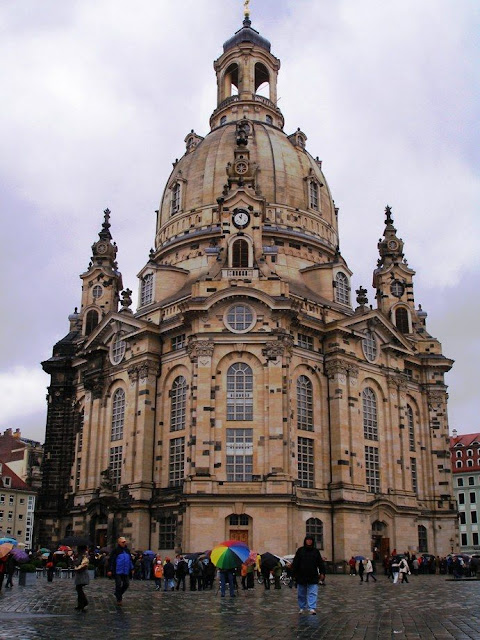
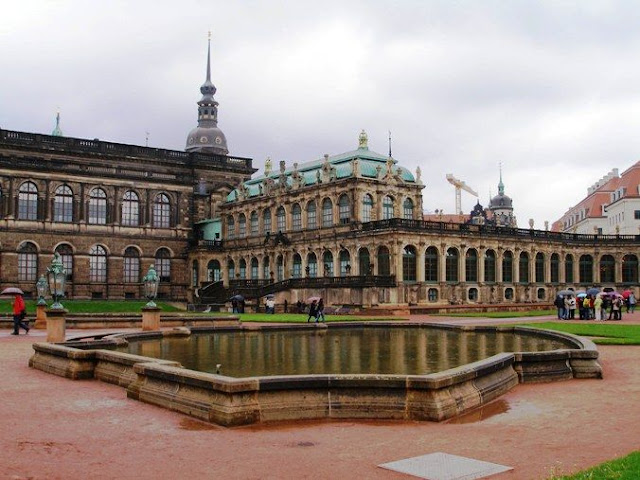
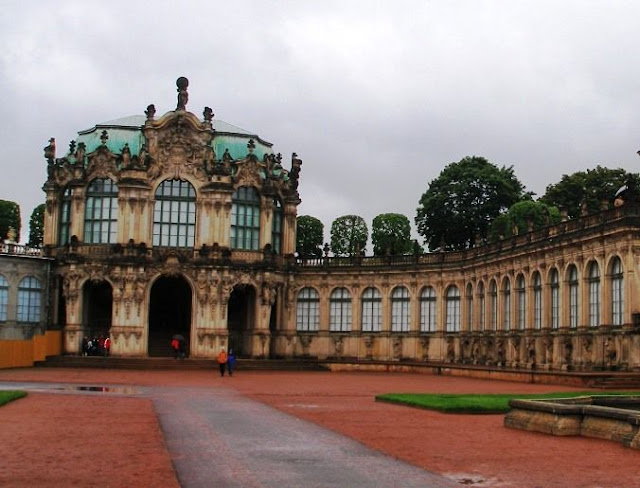
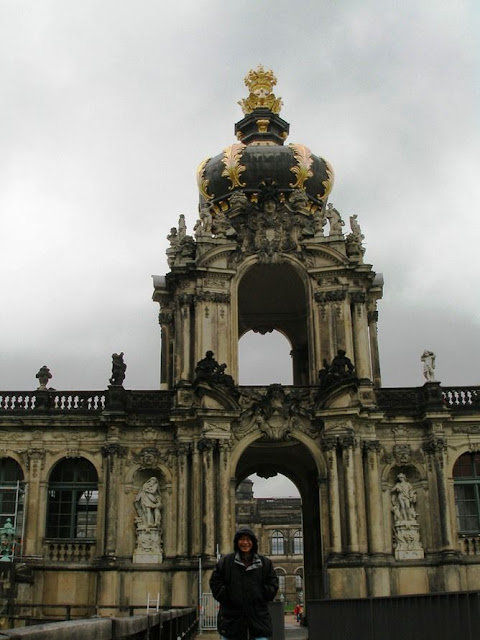
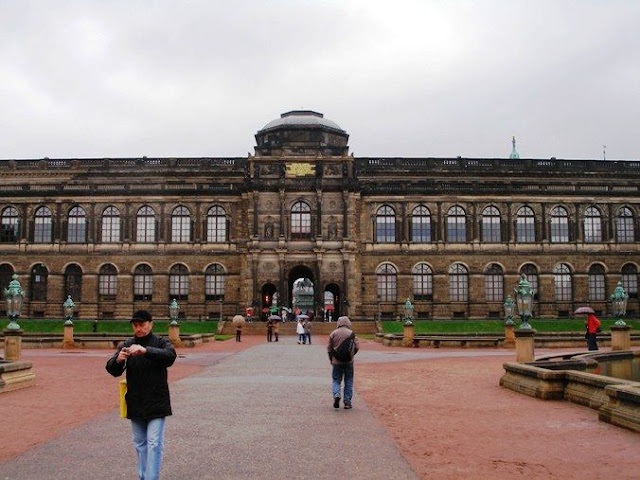
.jpg)
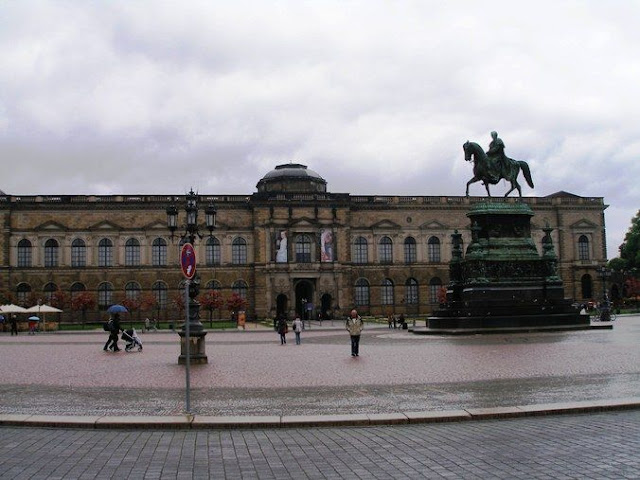
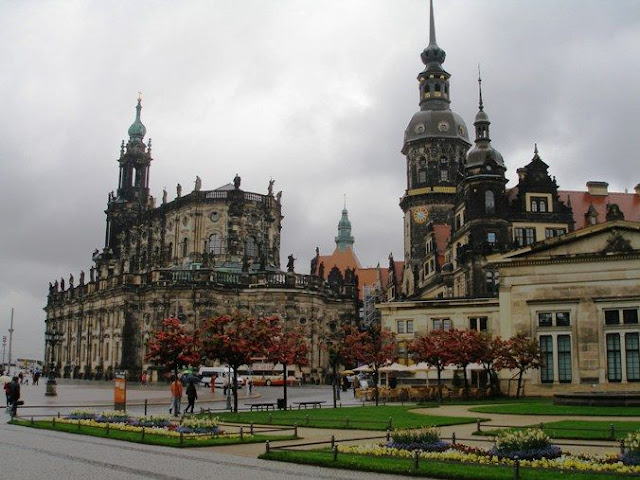
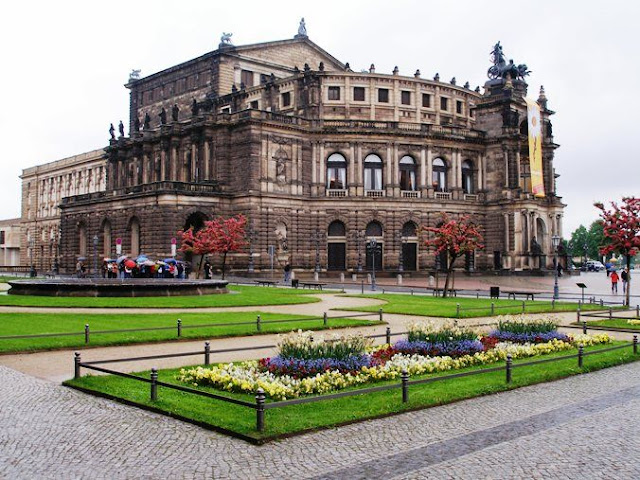
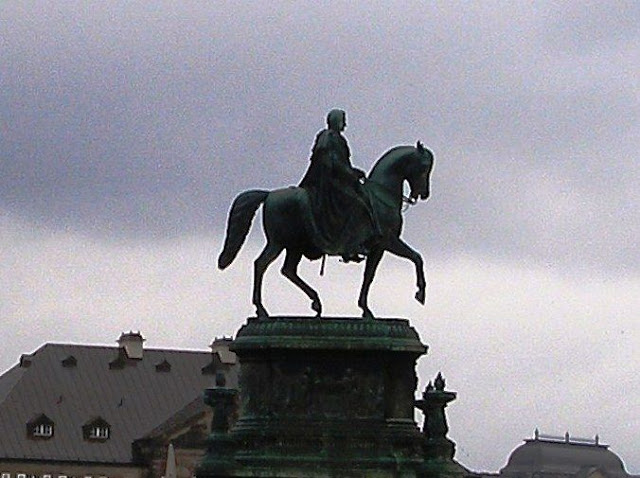
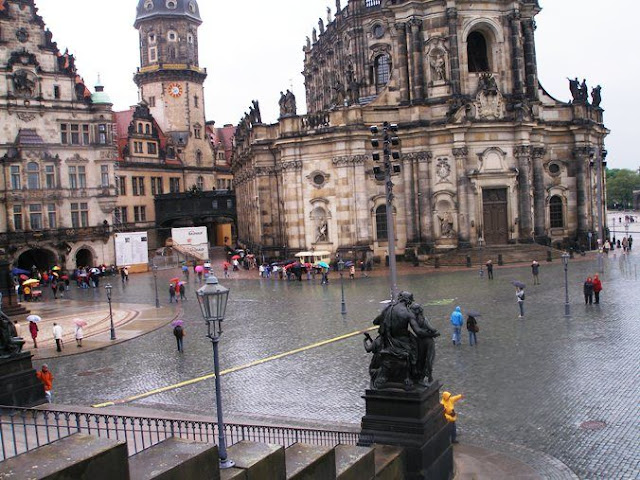
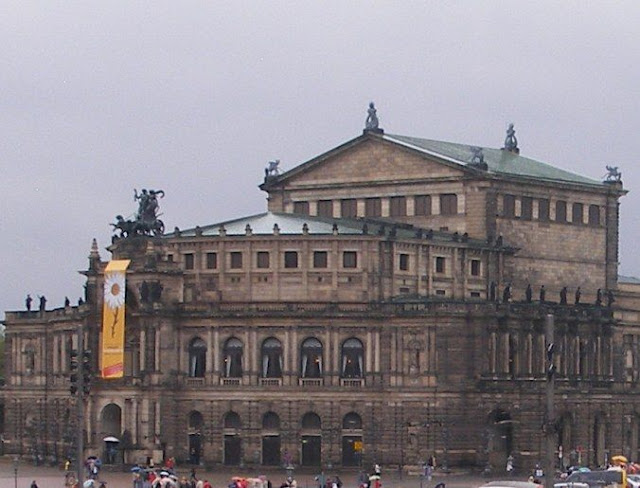
.jpg)
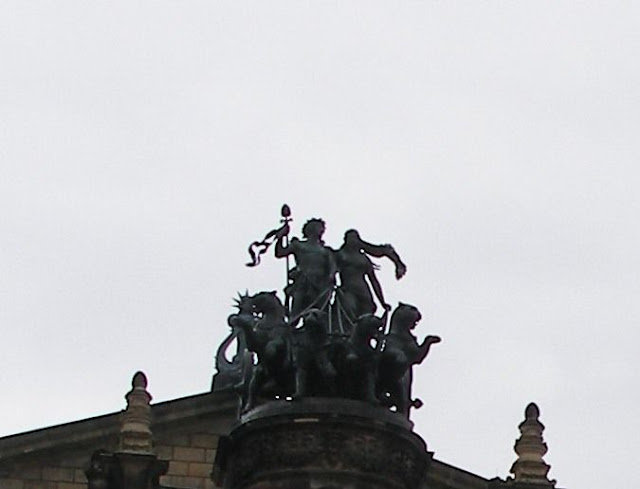
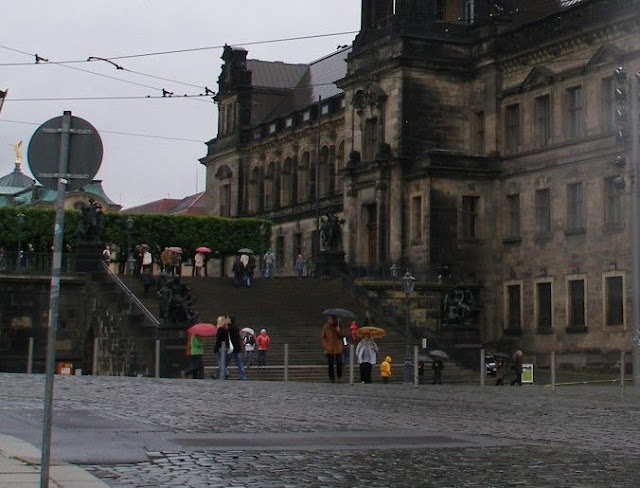
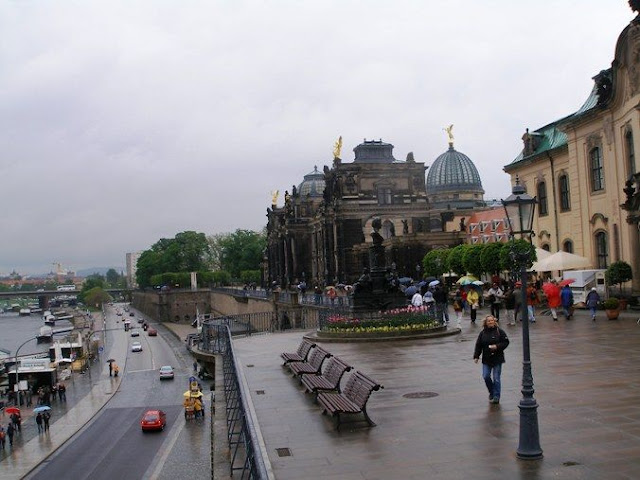
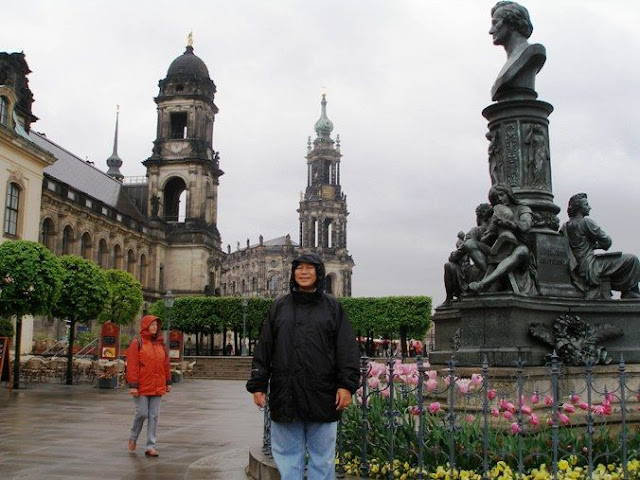
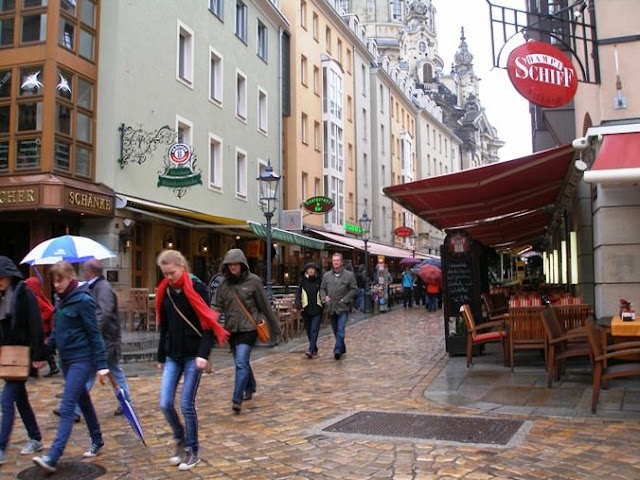
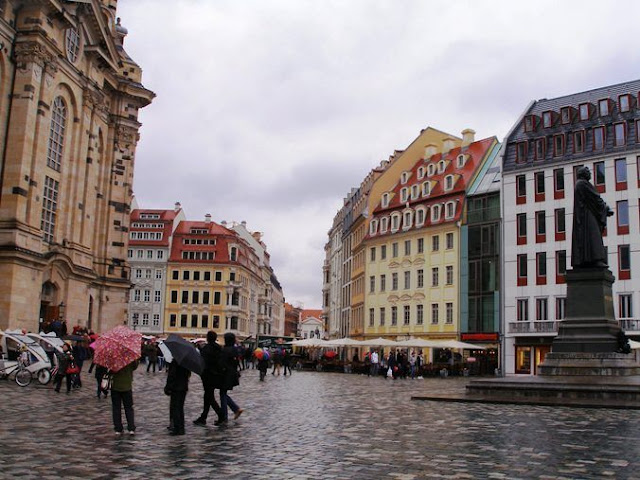
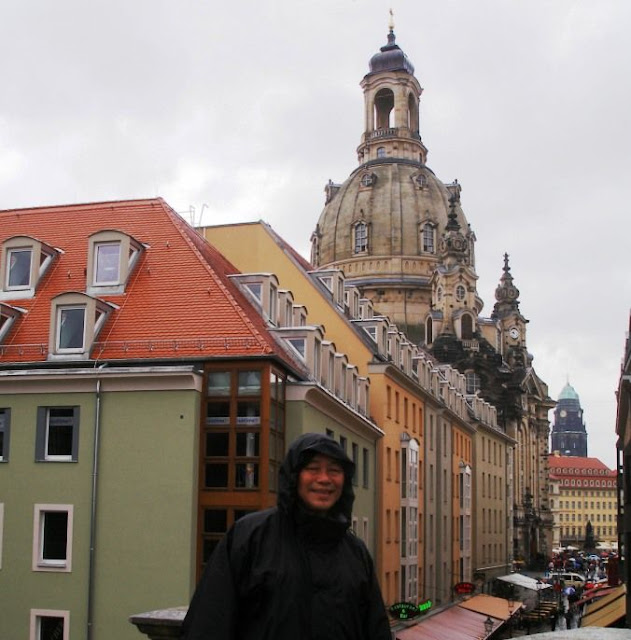
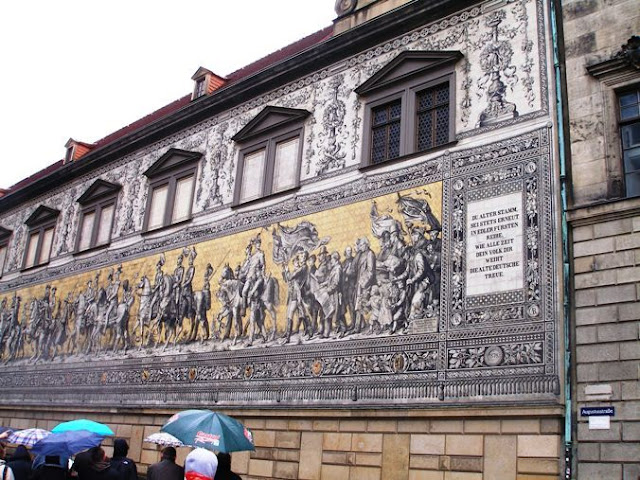
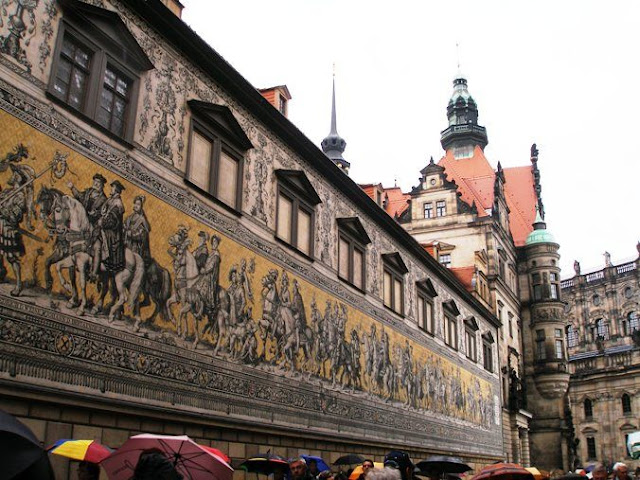
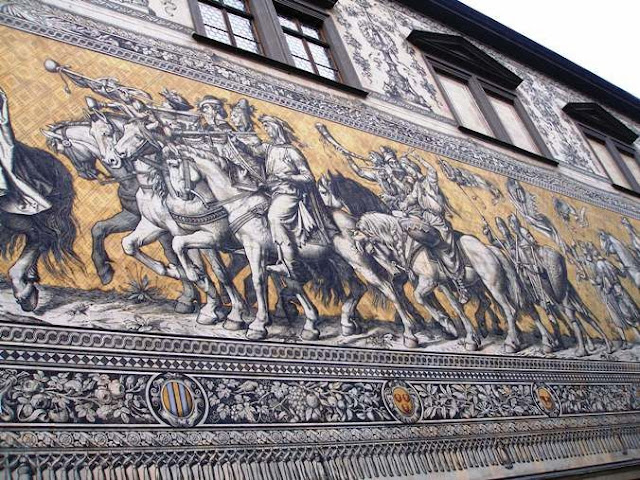

2 comments:
Nice photos! Thank you for sharing.
Thank you for comment
Post a Comment